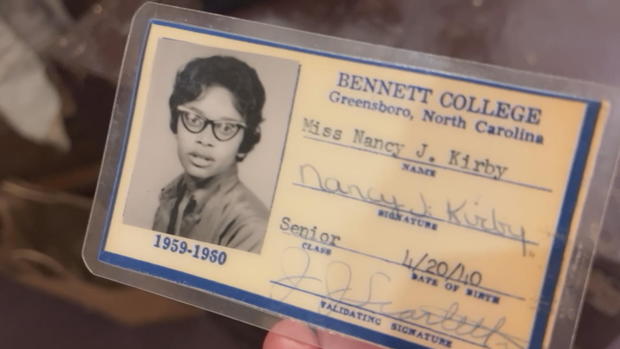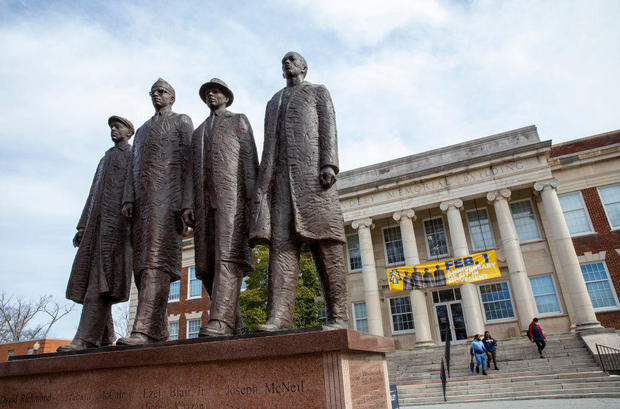Meet the New Jersey woman who was pivotal to North Carolina sit-ins during the Civil Rights Movement
PHILADELPHIA (CBS) — The sit-ins of the South became a pivotal part of civil rights history, and in 1960, a North Carolina college student from the Philadelphia area took a stand by being one of the first to sit down at a whites-only lunch counter.
Nancy Kirby's story begins in Haddonfield, New Jersey, where she grew up and graduated from high school at age 16. She was planning to stay local for college by attending the University of Pennsylvania or Temple University - two schools Kirby said offered her full scholarships. Her mother, however, insisted she go away and attend an HBCU.
"She wanted me to have an experience where I was not in the minority," Kirby said.
Kirby decided on Bennett College, a historically Black college for women in Greensboro, North Carolina. It was her first time in the segregated South, and when she arrived there in the late 1950s, the Civil Rights Movement was starting to catch on.
Kirby said her mother warned her against participating in the movement, fearing it would jeopardize her ability to graduate.
The sit-in demonstrations were a turning point in the Civil Rights Movement when Black people sat down at whites-only lunch counters. The first to do it are known as the "Greensboro Four," four North Carolina Agriculture and Technical State University students who took a stand by sitting down at the Woolworth lunch counter. They sparked an evolution, and their story has been told by many over the last 60 years. There's even a statue of the four men on North Carolina A&T's campus, but it turns out there's more to the story.
Decades after the sit-ins, Linda Beatrice Brown wrote a book titled "Belles of Liberty" to set the record straight.
"They didn't come up with this idea by themselves at all, and I got tired of hearing that story be told the wrong way. The Bennett women deserve a whole lot more credit than they get," said Brown, a Bennett alum who knows firsthand about the planning and organizing that happened before that first sit-in on Feb. 1, 1960.
"This was not just true of Greensboro, but true of the whole Civil Rights Movement: Women didn't get the credit they should have in terms of being the movers and shakers of this movement," Brown said.
At 20 years old and 450 miles from home, Kirby was one of those movers and shakers.
"My mother called again and said 'do not get involved in that.' By this time, I had already been arrested," Kirby said.
Despite her participation in the sit-ins, Kirby graduated from Bennett College in 1960. With the exception of those four years in college, Nancy Kirby has lived in the Philadelphia area her whole life. She spent the majority of her career working at Bryn Mawr College.
Only in recent years have she and other women been recognized for their role in the movement that changed the course of history.






